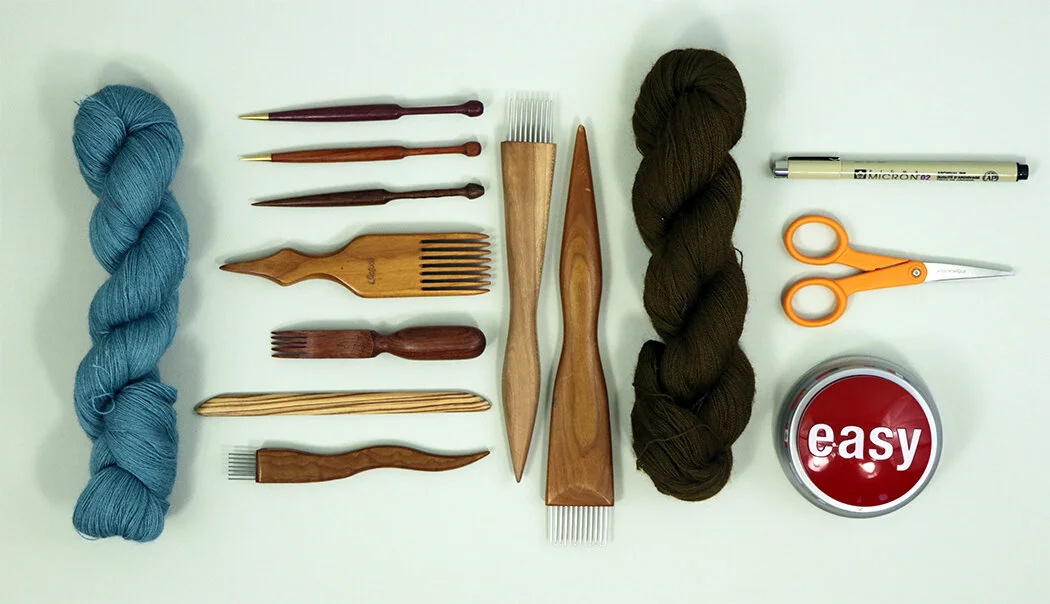A tapestry weaver’s task is to weave an image at the same time they’re creating a stable fabric. As a creator of images, many tapestry weavers are challenged by the process of designing. And part of that challenge has to do with that fact that we’re creating the fabric as the same time as the image so the work has to be structurally sound.
Some of us want to make fine art-level tapestries that hang in galleries and eventually someone’s home or office. And some of us want to enjoy the practice of the craft and don’t care one bit if anyone even sees their work. I think what matters most is whether or not the creator’s needs from the medium are met by their practice.
The thing that is true for of both of those kinds of creator is that design plays a part in engaging with this medium. Because we are creating something based in image, how we design that image is important.
Many people who land in my online classes do not have an art background. Beginners in tapestry that aren’t enrolled in a university-level art program most often don’t come with a specific art-designing background. There are exceptions, but the majority of my students haven’t been to art school. Many of them come to tapestry from other fiber arts. Maybe they are shaft weavers or knitters or they picked up a tapestry loom at a spinning conference and got hooked. For these people, once the basic tapestry techniques are learned, the realization that they don’t have good ideas or practices about how to make a successful design hit. This can be incredibly frustrating and many a beginner has quit at this stage of the learning process. Maybe that tapestry weaver is you.
Once you have some ideas for a design, learning to create an image that is weave-able in tapestry is the next step. There are some real limitations to this medium. We are creating on a grid formed by the warp and weft and the elements we can put into the tapestry is limited both by sett and materials. So how do we find a happy meeting place between those two things— creating a pleasing design and making sure that it is something that is weave-able in tapestry?
I gave a webinar about designing for tapestry this morning where I addressed these questions in more detail. You can watch the whole thing right below. After you watch it, leave a comment about the things you find most challenging about weaving tapestry.
